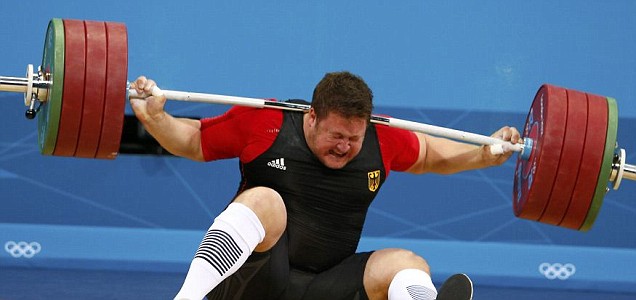I started writing about two and a half years ago.
I never really expected things to go the way they have. I didn’t plan on a career in fitness – at the time, I was still planning on getting a degree in history. I’d always loved lifting and coaching, but I didn’t really see myself making a career of it.
All I ever wanted to do with this site was create a resource that would have helped me out when I was just getting into lifting.
My first 5 years of lifting would have been a great case study in doing everything wrong. I trained with a great crew for my first 3-4 months under the bar, but when they all split up, I was left to fend for myself, knowing essentially nothing.
So, I did what any reasonable 15-year-old would have done: bought a copy of Supertraining, and started looking for information on the Internet.
I read Supertraining cover-to-cover and started religiously reading every major lifting site I could find. How much good did it do me?
Not much at all.
There were a few problems:
- I didn’t have a knowledge base to build on and assimilate new information.
- Most of the information was meant for people much more advanced than I was, or people who had different goals. It didn’t really apply to me.
- The information wasn’t placed in the proper context.
- The resources that WERE meant for beginners didn’t offer a way to move past the basic information.
- Information overload.
- Low signal:noise ratio.
Lack of a Knowledge Base
Your brain doesn’t treat all new information the same way. It’s more apt to retain new information that builds on old information, versus unassociated factoids.
For example, if I were to tell you that Cyrus the Great was the only non-Jew to be referred to as “Messiah” (or anointed one – המשיח in Hebrew) in the Bible, there’s a good chance you’ll forget that factoid in short order.
However, if you know much about the history of the Ancient Middle and Near East, it’ll probably stick, because you’ll know about Cyrus’s policies of cultural tolerance, and that he had a habit of releasing captured people groups (including the Hebrews) from slavery or exile at the hands of other nations he conquered. It’s much more likely that you’ll remember the factoid above, because it makes sense and builds upon the understanding you have about the history of the region and Cyrus’s reign in particular.
This concept applies very strongly to lifting. If you have a strong knowledge base, you’re much more likely to remember a new piece of information you learn. There’ll be other facts and concepts that it relates to, and the more connections you can make, the better.
If you’re constantly reading articles or watching YouTube videos, you’re usually getting factoids – individual bits of information. If you try to learn this way, it takes a long time to build the knowledge base necessary to efficiently assimilate the information you’re learning. You’ll probably just end up forgetting a lot of it.
Mismatched Audiences
The problem with foundational information is that it’s not sexy. You can only say “calorie balance is the most important factor in diet” or “training volume is the No. 1 driver of strength and hypertrophy” but so many times. That’s the stuff that most people need to hear and get through their heads.
The result is that a lot of the stuff people NEED to hear gets lost in the noise until they’ve been training for quite some time. And even when they hear it, there are no flashing lights telling them: “THIS IS WAY MORE IMPORTANT THAN THAT OTHER ARTICLE YOU JUST READ ABOUT OPTIMAL PRE-WORKOUT NURITION OR SOME RANDOM ACCESSORY EXERCISE!”
Each day, there’s a lot more “exciting” (not necessarily bad, but also not incredibly important) information produced than foundational, important information.
It’s not that all of it’s wrong. It’s just that a lot of it doesn’t really matter unless you have the basics squared away first.
Context
Ever wonder why my articles generally have word counts between 3,000 and 5,000? It’s because context matters.
This especially bit me in the butt when I first started powerlifting. At the time, raw lifting (only lifting with a belt and maybe knee and wrist wraps) was a relatively new thing. Most of the information out there was written by geared lifters (competing in bench shirts and squat suits) for geared lifters. However, gear usage was assumed, so I ended up reading and trying to apply a lot of information that was really never intended for me in the first place.
A lot of things change context. How long have you been lifting? What’s your athletic background? What are your specific weaknesses? Are you in a caloric surplus or deficit?
All of these things matter when choosing or adjusting a diet or training plan. However, most information is presented in black and white, good and bad. Most articles or videos don’t place their information in the proper context (or any context at all), so it can take a LONG time to understand when and for whom some practice applies. The information that may be suited for one context may be the absolute worst thing someone else in another context could do.
Beginner Resources
Most articles or books written to beginners basically assume their readers are pretty stupid. And, well, they generally are – at least about training – so you DO need to put your kid gloves on. You DO need to deliver basic information in a way that’s really easy to understand (as was addressed above).
However, most beginner resources leave it at that. When the reader picks them up, they know nothing. After they read them, they know a little bit. But from there, they don’t really have any guidance for where to go next. They’re spoon-fed information and never equipped with the knowledge it takes to seek out further information or start taking control of their training and diet.
Basically, they’re equipped with a basic set of answers, with no idea what questions they should ask next. They know how to put their head down and follow a program (which is what they need to do), but don’t have the tools to evaluate their needs and make adjustments or choose a new program when their beginner gains run out.
Information Overload
Let’s assume you read 3 articles or watch 3 videos per day, with the articles averaging 1,000 words and the videos averaging 7 minutes (the average person speaks about 150 words per minute, so 1,000 words here too).
That’s 3,000 words per day. That’s 21,000 words per week. That’s more than 1,000,000 words per year.
To put that number in context, that’s about 27 novels, or 8-12 textbooks. That’s essentially the sheer volume of information contained in an exercise science degree program. Once you’ve been doing this for 3-4 years, as many words about exercise and nutrition have passed through your eyes and ears as would be contained in the core material required to get your master’s.
You do not know as much about training and nutrition as someone with a master’s in human nutrition or sports science.
Given the time and effort you spend reading and learning, it should be pretty clear that you’re not using it as effectively as you could be. There’s more and more information being produced every day, at an ever-increasing rate, all vying for attention. And it’s not really getting you anywhere.
Low Signal to Noise Ratio
The barrier to entry for putting fitness information out into the world is simple: clicking “create blog” or “create channel.”
Anyone with an Internet connection can try to pass themselves off as a fitness expert.
Larger sites aren’t much better. The currency of the Internet is clicks. If something is exciting or controversial, it’s more likely to get clicked and shared.
The incentive isn’t to publish good information, typically. It’s to publish clickable and shareable information. There’s some overlap between “good” and “viral,” but the former isn’t a pre-requisite for the latter.
This can be especially damaging for people without a strong knowledge base. Without a measuring tape to assess whether something is useful, possibly useful, or even plausible, fads, practices, and products with little or no scientific backing can seem appealing or even necessary if they’re packaged right.
What to do about it
Looping back to the start of this post – why I started this site.
I’ve tried just about every program on the Internet. I fell for just about every exercise and diet fad when they came around. I’ve done some incredibly stupid things in my training. All while TRYING to learn as much as I could.
Perhaps … because I was trying to learn as much as I could.
I read everything I could get my hands on without building a knowledge base first – without even realizing I hadn’t built a knowledge base.
The reason I started this site: to hopefully keep other people from following the same frustrating path I did. I always think, “If 15-year-old Greg stumbled upon this site, would it help clarify things for him and equip him with the information he needed to succeed and avoid mistakes, or does it just add to the noise?”
That same thinking extends to the two books I recently wrote. My co-author, Omar Isuf, and I had the same frustrating experience that most other lifters have, and we wanted to do something about it.
I’ve had a big enough audience for quite a while to warrant selling a book. I haven’t put it off because I was afraid no one would buy. I’ve put it off because I wanted to create something in line with the overall aim of this site – providing clarity and equipping people with the foundation they needed to take control of their training. I’m my own toughest critic, so I just didn’t think I could make something good enough until now. I’ve been burned by plenty of products that were a waste of time and money, and I’d never charge someone for something that I wouldn’t buy myself.
However, I’ve finally put together a package I can be proud of, that I think can help just about everyone who reads it.
The Art Of Lifting helps cut through the noise that’s out there. It breaks down, in very clear language, the factors that REALLY matter in your training. It also warns of some of the major pitfalls out there – information that is either incorrect or generally not useful, but that can sound true or appealing when packaged right. It provides a strong foundation of knowledge for any new lifter, and will help remind more experienced people of what REALLY matters, in case they’ve lost focus chasing the latest fad.
The Science of Lifting helps you take the next step. If you’re a nerd like me, you’ll really enjoy this one. It helps distill essentially all of the relevant information out there and all the choices you have to make as an athlete or coach, into a handful of helpful models. This book provides the bridge from the basic information to the expert-level information, and equips you with the skills to think about training the way a pro would. The models in this book are literally what I use to make 95%+ of the training decisions for myself and my clients.
I’m convinced that if I had these books when I first started lifting, or even when I’d been in the game for 3-5 years, they’d have saved me a LOT of time and frustration. They’re the key that unlocks the usefulness that can be gained for the rest of the fitness information out there, the razor that separates the good from the bad, and the scale that helps weigh information based on context.
If you’ve read this site for a while, you know I don’t half-ass anything, and these books are no different. I set out to create something that could rightfully serve as the cornerstone of every lifter’s library, and I think I’ve done it.




